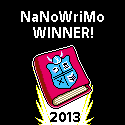Borders have changed in most parts of the world throughout history, and Russia, whether as Empire, Federation, or Soviet Union, is no exception. There’s a long history across that vast land of seeking to expand by absorbing neighbouring territory. Don’t forget, Russia had actually expanded to North America to their east. They had possession of Alaska (although I’m sure the indigenous peoples there would not have agreed, but what else is new) from the late 1700s until they sold it to the U.S. in 1867.
Let’s take a look at the changing boundaries of Russian influence over the centuries. [Click on any map for a closer look.]
Russian expansion in Asia, starting at 1533. Notice that Russia consisted only of the area shaded brown in 1533. And notice that that long-ago area already included what’s now Finland.
Another interpretation of Russian expansion (1300-1796). This one does not include the full scope of Asia like the previous map, but it is useful for having included the borders and names of some of today’s adjoining countries. It helps provide context.
Lands annexed moving west (1772-1795). Russia expanded at the expense of its western neighbours, as this map tries to explain. Russia gained more western territory with each partition.
Quadruple alliance, 1813-15. This map serves as a reminder of how different European boundaries were in Europe, and continued to be for a long time. Notice that Italy does not exist as a country. It did not become the united country we know today until 1946!
Territories lost after World War I and Russian Civil War, circa 1917-18. All the countries whose flags are shown on this map gained their independence from Russian control at this time. Including Ukraine!
The USSR (United Soviet Socialist Republics) in its early years (1922-30s). As you can see by looking at the difference between the previous map and this one, several of the newly independent countries were brought back under Russian domination in 1922. Including Ukraine.
The Soviet Union during the Cold War, 1949-1989.
The Russian Federation post-Soviet era. All those countries regained their independence in 1991 … again. Including Ukraine.
A map of the NATO countries, with dates of entry. I think this map, along with the two previous ones, helps explain why Putin feels threatened, and possibly enraged that all those former Moscow-controlled Soviet republics would rather be independent democracies. And, oh my, the Ukrainian people are suffering for it.


















Thanks for this as I think maps are really helpful in providing the visual means to better understand History.
LikeLiked by 1 person
Thanks, Wayne. There’s lots of history behind what goes on all over the world, and most of us really don’t have a full understanding of it all. Even here in Canada.
LikeLike
Reblogged this on Musings and Wonderings and commented:
A short visual history of Russia/Soviet Union/USSR, thanks to Jane.
LikeLike
I could study these maps all day! And I’d learn something new every time I looked at them. So interesting.
LikeLiked by 1 person
I know, I love maps. The history in Europe is remarkably complex to convey in maps because the power brokers (kings, popes, emperors, would-be power brokers) rearranged the boundaries with fair regularity. It would appear that they’re still trying.
LikeLike
I appreciate the work and research in your map posts. It is amazing!
LikeLiked by 1 person
Thanks so much, David. Lots of complicated history.
LikeLiked by 1 person
I agree with Wayne; my historical knowledge of this area until recently was pretty thin and this helps put Putin’s position in perspective… sigh..
LikeLiked by 1 person
Sigh, indeed. And now he’s starting on Odessa. It’s all beyond comprehension. The cover story in last week’s Economist describes it well, “The Stalinization of Russia”.
LikeLike
Interesting, Jane. Thanks for sharing. I didn’t realize there’d been so many changes.
LikeLiked by 1 person
And war/armed conflict has been responsible for most of those changes. If only it were up to the people and not the few power mongers at the top.
LikeLiked by 1 person
So true.
LikeLiked by 1 person
This is such a well researched post. I learnt quite a few new things although I was well aware of how often the boundaries have changed in the last 200 years just not before that. Thanks. There are so many reasons why he wants it but it doesn’t make it right.
LikeLiked by 1 person
It sure doesn’t! 😥
LikeLike
A very timely and important visual post to edify all of us right now, Jane. You forgot to mention, though, that former Alaska Governor Sarah Palin said that she could see Russia from her front porch. 😉 – Marty
LikeLiked by 1 person
LOL!! How could I have forgotten that gem, Marty?! Thanks for the reminder.
LikeLike
Really interesting Jane revealing much I didn’t know. I agree with comments, your maps are so helpful. I can see what’s behind Putin’s angst but the war and so much suffering is unbearable. War is the crime in my opinion.
LikeLiked by 1 person
I couldn’t agree more, Margiran. It’s one thing to acknowledge Putin’s dream; it’s quite another to in any way attempt justify his evil, cruel, criminal efforts to achieve them. He’s severely damaging his own country’s future on top of destroying the lives of literally millions of dead and displaced Ukrainians. So frightening what one man’s sense of entitlement/pride can do.
LikeLike